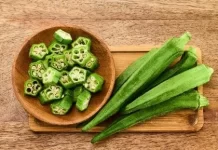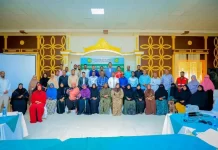Pastoralists who rely on livestock to survive forced to kill slow animals for sake of herd.
After slitting the goat’s throat the teenage boy wipes both sides of his blade on the goat’s body slumped on the arid ground, its eyes blinking as it bleeds out.
“It couldn’t keep up with the rest,” says the boy, his face expressionless, before he rejoins the herd and two other pastoralists heading southward through Somaliland’s Awdal region, next to its northwestern border with Ethiopia.
Farther north towards the Somaliland coast, thousands of goats, sheep, cows and even drought-hardy camels are buried in mass graves. It is estimated that about 600,000 livestock have died in the region due to the ongoing Horn ofAfrica drought.
Dotted along the southward route being taken by returning pastoralists are carcasses of lone goats, throats similarly cut by owners who chose to sacrifice slow-goers for the sake of the rest of the herd.
Other animals are simply collapsing from exhaustion or dying from exposure after sudden spring rains arrived cruelly late in April.
“We’re stuck here, my sick camel can’t carry anything,” Abdulahi Amir (70) says of the last of his three camels alive, his family’s possessions strewn on the ground. He doesn’t know what to do now. “We will wait.”
Bitter end
A futile six-month odyssey is coming to a bitter end for these Somali-Ethiopian pastoralists.
Last November, faced with desiccated pastures in Ethiopia’s Somali region – experiencing its worst drought in living memory – pastoralists heard hopeful rumours of rains and good pasture hundreds of kilometres away near the coast of Somaliland, an internationally unrecognised but de facto sovereign nation separate from Somalia.
A long trek in desperate hope began. But there wasn’t enough rain or pasture for the numbers that descended. Afterwards there was nothing to do but turn back and return to Ethiopia, a tortuous crawl through the Somaliland wilderness.
“If we had transport we might have a future,” says Atosh Abdille (40) with his 50 goats that remain from the original 100. He estimates it could take 15 days to return to home in Ethiopia – animals are too weak to cover much ground each day – and that another 30 goats may die on route.
Some pastoralists have lost as many as 500 livestock. Whatever the numbers, all pastoralists rely on their treasured animals to provide meat, milk and trade. For these people a herd embodies an entire life’s savings.
“It is like everything you need to survive depending on something that is entirely out of your control: your house, your job, every possession, all reliant upon good rains,” says Simon Le Tocq, emergency programme manager in the Somali region for Dublin-based charity Concern Worldwide, which for the last five years has received funding from Irish Aid for development work in Somaliland. “Then the rains stop, and all you can do is watch as the crops and animals upon which your survival depends all die.”
Tiny budget
Somaliland’s government has tried helping by trucking some pastoralists and their herds to the Ethiopian border to shorten journeys. But operating on a tiny budget – lack of international recognition is a huge hindrance to the economy – the government is severely limited in its capabilities, remaining heavily reliant on international humanitarian organisations.
The United Nations assesses that across Somaliland and Somalia 1.7 million people – nearly 40 per cent of the region’s population – need humanitarian assistance due to drought conditions. And there is a grim precedent: between late 2010 and early 2012 about 260,000 people died in a barely acknowledged famine in southern Somalia, despite predictions and warnings almost a year earlier.
Pastoralists and their way of life are under mounting pressure in the face of climate change and increasingly frequent, severe droughts pummelling the Horn of Africa.
Alternative employment
“You just can’t have the same numbers of people surviving in those conditions – it’s beyond the control of the people or the government,” says John Graham, Ethiopia country director for Save the Children.
“There still are extremely successful pastoralists, as you have a huge livestock trade through Djibouti, but the poorer ones are losing animals through drought and becoming destitute, so the important question is how to provide them alternative employment.”
Back in Ethiopia’s Somali region, some who already returned from the coast acknowledge how recurrent droughts are making the nomadic way of life increasingly hard to sustain.
“If we get a restocking programme from the government we might have a chance,” says 50-year-old Osman Kaire, waiting in the village of Gad for government delivery of animal fodder. “The other option is for a government resettlement programme in more reliable areas where we can be agro-pastoralists. We are ready to consider.”
Unrestrained by borders as they desperately search the plateaus and plains of Ethiopia, Somalia and Djibouti to find the water and pasture they need to stay alive, it is unclear who is responsible for these forsaken pastoralists. Added to which, nomads aren’t typically front and centre of politicians’ focus.
“Governments in the region need to talk more to each other about this,” says Abdirashid Haji, Concern Worldwide’s country director for the Somali region.


































